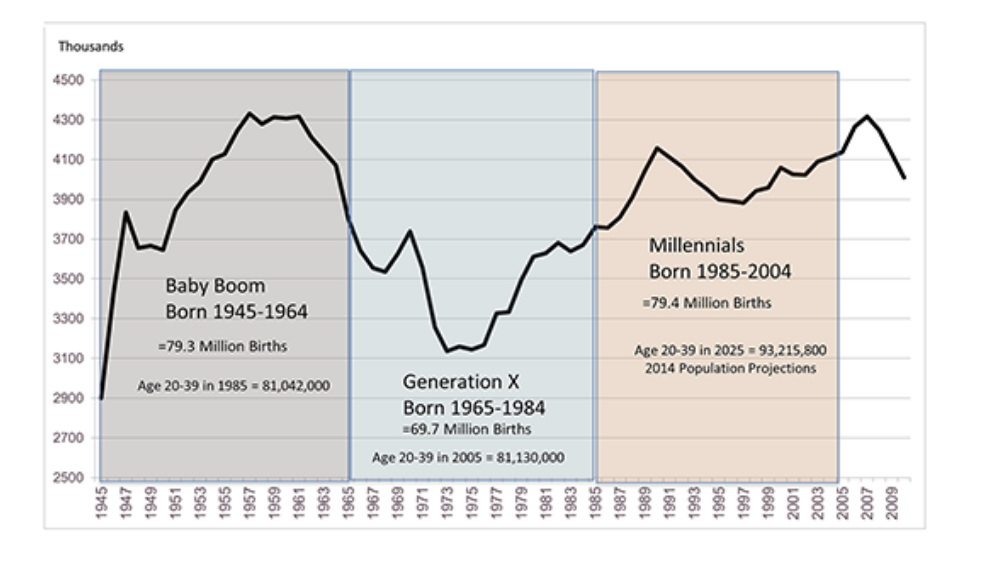“You can’t model consumer behavior” was a bit of wisdom shared with me by a plastic surgeon many years ago. He was referring to the unpredictable nature of human beings, especially when it comes to self-improving medical procedures. I would never have predicted that people would willingly pay money to have a needle inject a chemical into their foreheads that has also been classified as a WMD (weapon of mass destruction).
When it comes to demographic groups, I am at the tail end of the “Baby Boomer” generation that was born between 1946 and 1964. For much of my life, it was “the” coveted demographic by marketers and had a reputation for disrupting every aspect of society due to its sheer size as well as spending habits.
Most boomers are now retired (not me!) and no longer dominate the conversation among demographers. That mantel has been handed over to the Millennials, people born between 1981 and 1996. One day they too will be relegated to Generation Z (AKA “Gen Z”) whose birth years are from 1997-2012.

The Millennials are now in their 30s and early 40s and prime candidates for elective medical procedures. In fact, the subset of Peak Millennials — now turning 33 and 34 — were part of the highest rate of new births ever in the US. This group is large and (increasingly) in charge when it comes to spending.
Their value system differs from their predecessors in some important ways as summarized in this recent article that is worth reading. These Peak Millennials have had to compete for resources — college admission, entry-level jobs, first apartments and (now) first homes as their sheer size outstripped what was available. They are going through their own version of what demographers called The Pig in the Python when describing the Baby Boomers a generation ago.
The Millennial population is emerging as the key target demographic for much of what aesthetic, refractive, and cosmetic dental specialties have to offer. My biggest takeaway from the article is that Millennials value experiences over stuff. They embody everything described in The Experience Economy, a societal shift defined by authors Joe Pine and Jim Gilmore in their seminal book that debuted 25 years ago.
The connection between what they value and what you offer makes the case that a great patient experience — PX for short — is the benchmark these consumers will increasingly use in their decision-making. Those practices that embrace PX as integral to their offering and culture are destined to do well now and long into the future.

